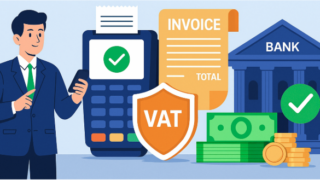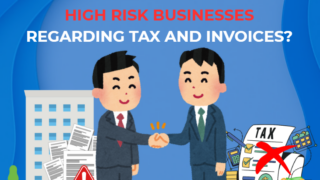A complete summary of all cases eligible for Import-Export Tax Exemption under Vietnam’s 2025 E-I Tax Law. Learn the conditions and procedures to optimize your costs.
Vietnam’s new 2025 Law on Export-Import Tax is now active. This guide details all cases of E-I tax exemption, explaining the latest tax policies and procedures for businesses to legally reduce their tax burden.
- What is Export-Import Tax Exemption under the 2025 Law on E-I Tax?
- Summary of cases eligible for E-I tax exemption under the new law
- 1. Tax exemption for goods serving investment projects
- 2. Tax exemption for goods for processing and for export production
- 3. Tax exemption for goods serving security, defense, education, and science
- 4. Tax exemption for goods of foreign organizations and individuals enjoying privileges and immunities
- 5. Other tax exemption cases (humanitarian aid, gifts, etc.)
- Necessary procedures and documents for E-I Tax Exemption
- Common mistakes and risks when applying for tax exemption
What is Export-Import Tax Exemption under the 2025 Law on E-I Tax?
In the spirit of the 2025 Law on Export-Import (E-I) Tax, E-I tax exemption means that the state does not collect tax on certain types of exported and imported goods. This is an important policy tool used to achieve various objectives such as: encouraging investment in preferential sectors and industries; promoting domestic production; implementing international commitments; or for humanitarian, security, and national defense purposes.
It is necessary to clearly distinguish between “tax exemption” and other forms like “tax refund” or “tax reduction.”
Tax Exemption: Goods subject to this will not have to be taxed from the outset when carrying out customs procedures.
Tax Refund: The enterprise still pays tax upon importation but will later be refunded the amount paid if it meets the conditions (e.g., goods imported for the production of exported goods).
Tax Reduction: The enterprise is allowed to pay a portion of the tax compared to the original tax rate.
A clear understanding of the nature of “tax exemption” will help businesses proactively prepare their documents right from the import procedure stage, thereby optimizing cash flow and avoiding complex procedures later on.
Summary of cases eligible for E-I tax exemption under the new law
The 2025 Law on E-I Tax has consolidated, amended, and supplemented many regulations on tax-exempt cases. Below is a detailed list of the most common cases that businesses should note.
1. Tax exemption for goods serving investment projects
This is a very important tax exemption case, applicable to enterprises with investment projects in sectors encouraged by the state.
Tax-exempt goods include: Machinery, equipment, components, spare parts, and molds: Serving directly to create fixed assets for the project.
Raw materials, supplies, and components: Serving the production of projects in sectors with special investment incentives, especially high-tech projects or projects producing high value-added products.
Construction materials that cannot be produced domestically: Serving directly the construction of factories and infrastructure for the project.
Example: An FDI company imports a completely new semiconductor chip production line. This machinery cannot be produced in Vietnam and serves a high-tech investment project directly. This company will be fully exempt from E-I tax for that shipment of machinery.
2. Tax exemption for goods for processing and for export production
This is the most common case of tax exemption in the manufacturing and processing sectors for exported goods.
Tax-exempt goods include: Raw materials, supplies, and components: Imported for processing and production of exported goods.
Finished products: Goods produced in Vietnam from imported raw materials, which are then exported abroad.
Example: A garment company imports fabric from abroad to cut and sew into clothing. This batch of clothing is then exported to the European market. The company will be exempt from import tax on the initial fabric batch and exempt from export tax on the finished clothing batch.
3. Tax exemption for goods serving security, defense, education, and science
The state uses tax exemption policies to promote social and national security objectives.
Tax-exempt goods in this case include: Goods directly serving security and defense: Specialized equipment, weapons, vehicles, specific medical supplies…
Goods serving education and science: Books, textbooks, teaching equipment, scientific research machinery… that cannot be produced domestically.
Example: A university imports a modern spectrophotometer for scientific research purposes. This equipment will be exempt from import tax if it meets the standards and procedures as regulated.
4. Tax exemption for goods of foreign organizations and individuals enjoying privileges and immunities
This tax exemption applies to special subjects as stipulated by international and Vietnamese law.
Beneficiaries of this incentive include: Diplomatic missions, international organizations: Goods imported for the activities of these agencies, including vehicles.
Diplomatic officials, staff of international organizations: Goods imported for their personal use during their term of work in Vietnam.
5. Other tax exemption cases (humanitarian aid, gifts, etc.)
In addition to the major cases above, the 2025 Law on E-I Tax also provides for tax exemption for many smaller but also very important cases, including:
Humanitarian aid, non-refundable aid: Goods sent from abroad to Vietnam to support areas affected by natural disasters, epidemics…
Goods as gifts or presents: Within the prescribed tax-free limit (e.g., below a certain value and not prohibited items).
Goods for temporary import for re-export, temporary export for re-import: Goods brought into Vietnam temporarily for fairs, exhibitions, repairs, or to be returned within a certain period.
Necessary procedures and documents for E-I Tax Exemption
To be legally and smoothly exempt from tax, businesses need to follow the correct procedures and prepare a complete set of documents.
1. What documents are needed for the tax exemption application file?
The tax exemption application file is usually submitted along with the customs declaration dossier when carrying out import procedures. A complete file typically includes the following documents:
A written request for tax exemption: According to the form prescribed by the customs authority, clearly stating the type of goods, purpose of use, and the legal basis for seeking tax exemption.
Contracts, Investment Registration Certificates: These are important documents to prove the goods are for an investment project.
A detailed list of goods: Listing complete information on the name of the goods, quantity, value, HS code…
Other documents: Processing contracts (if any), Aid Certification (if any), Letter of Introduction from the governing Ministry or sector…

2. Application submission process and review timeline
The process for submitting a tax exemption application is as follows:
Step 1: The enterprise prepares the documents and submits them to the Customs authority. The file will be submitted electronically through the Customs’ VNACCS/VCIS system.
Step 2: The Customs authority receives and reviews the file. The customs authority will check the validity and completeness of the documents.
Step 3: A decision on tax exemption is issued. If the file is valid, the customs authority will issue a decision on tax exemption and carry out customs clearance for the goods without collecting tax. The review time is usually quite fast, about 01 working day for simple cases.

Common mistakes and risks when applying for tax exemption
Although tax exemption offers great benefits, if not careful, businesses can encounter serious mistakes and risks.
1. Errors in identifying the subject and conditions for exemption
This is the most common mistake. Businesses may misunderstand or misapply the tax exemption subjects. For example, importing a type of machinery for production, but that machine can be produced domestically, or the investment project does not meet the incentive criteria. The consequence is that the business will be denied tax exemption and must pay the full tax.
2. Errors in documents, certificates, and actual conditions
The tax exemption application file requires absolute accuracy. Missing a necessary document, discrepancies in the information on the list, or failing to prove the link between the imported goods and the investment project can lead to the rejection of the file. Even a small mistake can cause the business to lose time and incur storage and yard costs due to the goods being held for supplementary documentation.
3. Risk of retroactive tax collection when using goods for the wrong purpose
This is the most serious risk. Tax-exempt goods must be used for the declared purpose. If the business arbitrarily sells, gives away, or uses the tax-exempt goods for another purpose (e.g., using imported raw materials to produce goods for domestic consumption instead of for export), the customs authority has the right to retroactively collect the full amount of the exempted tax, along with late payment interest and administrative penalties.
The Export-Import tax exemption policy under the 2025 Law on E-I Tax is a powerful tool to help businesses optimize costs and enhance competitiveness. However, implementing this policy is not simple. It requires businesses to have a deep understanding of legal regulations, thorough preparation of documents, and especially, absolute care in complying with the conditions after being granted tax exemption. To ensure this process is safe and effective, consulting with E-I tax experts from the beginning is a smart choice, helping businesses to fully leverage the benefits this policy brings in a legal and sustainable manner.
For any inquiries, contact Wacontre Accounting Services via Hotline: (028) 3820 1213 or email info@wacontre.com for prompt assistance. With a team of experienced professionals, Wacontre is committed to providing dedicated and efficient service. (For Japanese clients, please contact Hotline: (050) 5534 5505).






